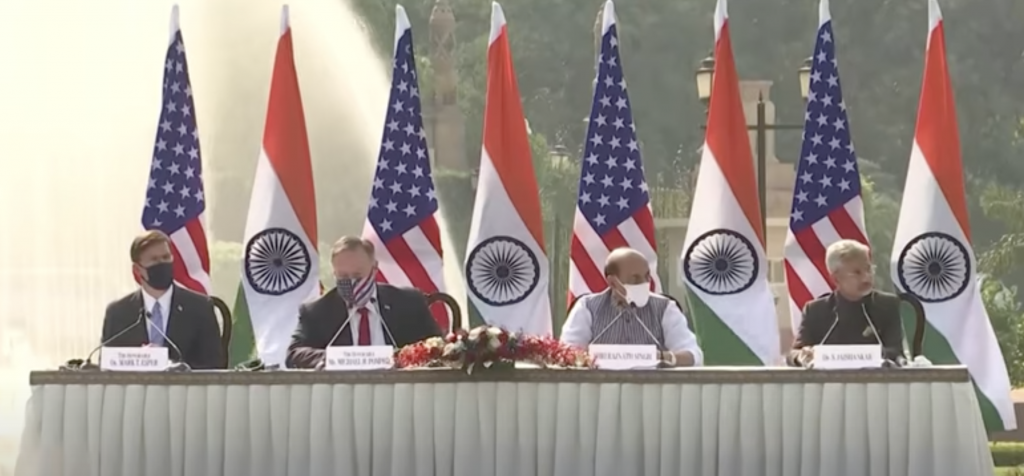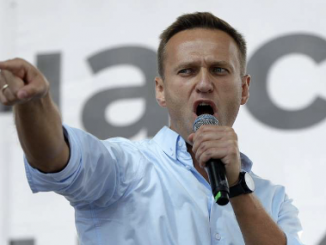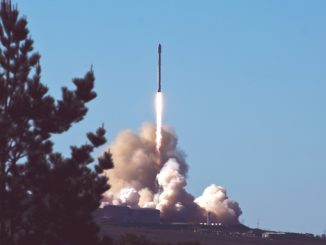
Despite the continuing aggrandizement of the “Indo-US Strategic Partnership” by Indian intelligentsia and strategic circles coupled with the megalomaniac celebrations that accompany every new agreement between the US and India, the relationship remains an abstract and complex picture of lofty expectations, phantasmal desires, and irreconcilable realities, especially from an American perspective. American policymakers, overwhelmed by the influential right-wing Indian diaspora that has permeated deep into the policy-making circles of the United States and by an ardently orchestrated influencing media campaign, have been led to believe that India shall prove to be the resolute bulwark against China in the region and that it is in the US strategic interests to help India become a global power. However, a retrospective analysis of Indo-US relations and that of the track of Indian diplomacy and strategic behavior since cold-war, indicates that Americans may be betting on the wrong horse.
Roosevelt once said, “the more you know about the past, the better prepared you are for the future”. If history can be a guide to the future, the track of Indian strategic behavior since 1947 should give us enough understanding of how the developing Indo-Strategic partnership might unfold. History tells us that India refused to play any role to check the spread of communism, it has mostly stood against the international community on issues of human rights, nuclear proliferation, condemning state aggression, and promotion of democracy despite claiming to be a country founded on secular democratic ideals. Indian foreign policy, driven by Chanakya’s teachings of deception; deviousness, unpredictability, and idiosyncratic self-righteousness, has always swayed back and forth to grab maximum economic, technical, and defense assistance both from the east and west under the garb of neutrality and that is likely to be the future trajectory of her behavior.
The History
During the early decades after independence, Indian foreign policy aimed at squeezing maximum development aid both from the East and the West under the guise of neutrality. For the same reason, the US remained wary of India and at one point US Secretary of State John Foster Dulles characterized nonalignment as “immoral.” Subsequently, when US Secretaries of State like Dean Rusk and Robert Komer were trying to convince their presidents (Kennedy and Johnson) to rely on India because it was “the largest and potentially most powerful non-Communist Asian nation”, India was lecturing United States not to pressurize USSR, ridiculed American fears of the Soviet Union and was highly critical of the American policy of containment. At this critical juncture of history when south Asia was under the direct communist threat and a huge country like India with lofty claims of democracy and freedom could have played a crucial role to check the spread of a non-democratic ideology, Indian behavior was that of an indifferent, uninvolved and guile player covertly supporting USSR while simultaneously milking the west especially the USA under the guise of non-alignment and waiting for the dust to settle after the fight between two opposing ideologies was over. The rapacious nature of Indian foreign policy during the cold war is evident from the fact that from 1947 till the mid-80s, India was able to squeeze $12 billion in aid from The United States as compared to the Soviet contribution of $6 billion despite eschewing to play any role in containing Communism. However, events of 1971 and American disapproval of India’s active involvement in destabilizing the eastern wing of Pakistan led India into an open and formal embrace of the Soviet Union that transformed into a strategic partnership and continues till date. Despite the recent Indian tilt towards the USA, Russia still supplies 56% of total Indian arms imports according to SIPRI.
On issues of nuclear proliferation, condemning state aggression, promotion of democracy and human rights, India has mostly displayed a recalcitrant behavior and stood contrary to the international community. Few of the examples from history justify this claim. Defying international protocols, India was the first one to explode a nuclear device in South Asia in1974 raising alarm around the world and in the region about her ambitions and its refusal to sign Nuclear Nonproliferation Act in 1978 further alienated her from the West and especially the United States. Once again, in 1998 India was the first one to test nuclear weapons surprising the world community and sending tremors of instability in the region pushing Pakistan to pursue the same path for its security. India remains outside the folds of the Non-Proliferation of Nuclear Weapons (NPT) Treaty and the Comprehensive Test Ban Treaty (CTBT) and continues to enhance her nuclear arsenal regularly which should be a source of serious concern not only for the region but for the world.
India opposed NATO’s humanitarian intervention led by the US in Yugoslavia to help Kosovar Albanians and on April 13, 1999, abstained from voting in favor of the United Nations Commission on Human Rights resolution that strongly condemned the policy of ethnic cleansing taking place in Kosovo. The incessant depredations and brutalities by the Indian military and paramilitary forces in occupied Kashmir on similar lines were the reasons that India abstained from voting in favor of this humanitarian resolution. This indicates the dubious stance of a nation that vehemently portrays itself as the largest democracy and protagonist of human rights at international forums.
The Iraqi invasion of Kuwait in 1991 was another occasion of international concern when India stood aloof with a delusional self-righteous stance. Contrary to the unified stance of the International Community and the US, India never condemned the Iraqi occupation of Kuwait in 1990 – 1991 owing to her historic ties with the authoritarian Baathist regime in Iraq. The statement issued by India’s permanent representative in the UN, Chinmaya R Gharekhan, did not use the word “condemnation” which upset Kuwait. It did not become part of the coalition as well rather had a softer stance for the aggressor. Moreover, India decided to shift its embassy from Kuwait to the Iraqi port city of Basra within days after the Iraqi invasion which was seen as a symbolic Indian endorsement of the Iraqi invasion and annexation and the Indian Foreign Minister became the first foreign leader to visit Baghdad after the invasion.” Again, Indian actions were triggered by the aggressive aspirations she harbors about her neighbors and the fears of becoming the target of similar international condemnation.
Similarly, in a sharp blow to America’s postwar plans in Iraq in 2003, India refused to send peacekeeping troops despite American pressure to do so. Two left-leaning former prime ministers, Indar K. Gujral and V. K. Singh stated, ”We believe irreparable damage will be done to India’s reputation and good name if Indian troops were sent to prop up the occupation of Iraq,” they said. ”Above all, it will be unwise and unfair to our army to send them on a mission to risk their lives where no national interest is at stake.”
Yet on another occasion, India did not join the Western powers’ condemnation of Russia’s intervention in Crimea in 2014 and kept a low profile on the issue. National Security Adviser Shivshankar Menon replying to the question remarked, “There are legitimate Russian and other interests involved and we hope they are discussed and resolved.” A Ukrainian embassy spokesperson in Delhi responded to Menon’s comments by saying: “We are not sure how Russia can be seen having legitimate interests in the territory of another country. In our view, and in the view of much of the international community, this is a direct act of aggression and we cannot accept any justification for it.” Yet again, Indian statements are actually in the backdrop of its nefarious designs about Kashmir starting to manifest in so-called “surgical strikes” against Pakistan.
Sameer Lalwani and Heather Byrne have cited quite a few examples which indicate a dubious Indian voting behavior at the UN that neither conforms to her lofty democratic claims or portrays India as a reliable American partner. American policy experts and Govt officials have criticized this Indian behavior and termed it as “all talk no show” in private conversations.
Present and the Future
These glimpses of self-centered Indian behavior on issues of international concern, human rights, and state aggression underscore a pattern that has not changed much rather it has become more sophisticated. Today, Indian behavior is supported by a strong diplomatic effort coupled with a well-orchestrated disinformation campaign through a network of Indian intelligentsia that has permeated prominent think tanks, universities, and official circles around the world. The recent discovery of an Indian-backed disinformation network by EU Disinfolab may just be the tip of the iceberg. Although India has signed some important civil and military cooperation agreements with the USA which are being celebrated both by American and Indian strategic circles, Americans might be in for a surprise when it comes to expecting a bold stance manifested in tangible actions from India against China for various understandable reasons.
We are well aware of the famous American adage TANSTAAFL (There ain’t no such thing as a free lunch”), so what are American looking for in return after opening the doors of economic, military, and technical assistance to India without fears that this technology may land in Russian hands? They have even renamed Pacific Command as Indo-Pacific Command to the much delight of Indians and foresee India as a net security provider in the region. Obviously, it would not be for Indian thankfulness, celebrations, and an enormous increase in Indian diaspora to the US alone. Surely, they are looking for more than mere rhetoric aimed at the glorification of Indian partnership with the US and its concomitant benefits that the US is lucky to reap.
Ex-US Secretary of state Mike Pompeo’s speech of June 2019 in New Delhi outlines the ideals on which Indo-US partnership is supposed to be anchored and what Americans are looking for from this partnership. He described rule of law, human dignity, the importance of civil society, and democracy as the common ideals between the US and India which bind both nations. Secondly, he emphasized a “free and open Indo-Pacific region” with special mention of Chinese efforts in the South China Sea and Iranian attacks on tankers from different countries and the role that India and the US can play in this regard. Well, it is for American scholars, researchers, and policymakers to analyze the ongoing alarming state of these ideals in India today and decide how the much flaunted Indo-US partnership may unfold in the future.
As far as expectations from India in keeping a free and open Indo-Pacific and acting as a buffer against China’s growing power are concerned, it doesn’t suit India’s strategic interests to have a confrontational relationship with China, neither India has the military, economic and technological capacity, and state-will to do so effectively. This is evident by India’s rejection of US proposals of joint patrols in the South China Sea. Former Indian Defense Minister Manohar Parrikar stated in July 2018, ” India has never participated in joint patrolling. But we do participate in joint exercises. So the question of joint patrolling at this stage does not arise.” This indicates how far India is willing to walk with the US when it comes to taking on China. On the contrary, India conducted a joint patrol with France in February 2020 from Reunion Island because it was not aimed at China which might have not gone well with Americans. Moreover, India is still a rising economy and can hardly afford a confrontation with a country much larger in size, economy and military might right on her borders. A country which happens to be its 3rd largest trade partner as well with a mutual trade of around $ 92 billion in 2019 and $ 78 billion till November 2020. Well, that is huge – and antagonizing China shall have serious ramifications for the Indian economy.
The recent stand-off between Indian and Chinese forces in Ladakh’s Galwan valley and the subsequent namby-pamby Indian response gives us clues to the future. Since the beginning of the Galwan crisis, Indian leadership has been reluctant to even name China openly despite losing hundreds of square kilometers of territory and dozens of soldiers. All they have done is to dish out haughty statements against an arbitrary and imaginary foe before turning their focus towards Pakistan for venting their frustration and anger and asking Americans to DO MORE to satiate Indian appetite for western military technology and equipment – which actually focuses on Pakistan rather than China. Probably Americans are well aware of Indian reluctance to confront China which was manifested in former United States national security advisor John Bolton’s statement saying “there is no guarantee that Trump would back India if the situation between Beijing and New Delhi escalates.” Whereas Indian strategy to respond to such statement is through a plethora of articles in Indian and International electronic and print media aimed at scaring Americans that India might back off, India may lose its strategic autonomy by siding with the US and it should tread cautiously the path of Indo-US strategic partnership. Most of these articles culminate in asking Americans to do more and understand the Indian strategic compulsions restricting India to be more assertive against China. This indicates that India wants Americans to take on China by themselves while simultaneously bestowing military aid and technology as an expression of thankfulness for the hollow Indian partnership. Americans at this point have been led to believe in the wide-ranging benefits, especially economic, of courting India by the Indian intelligentsia present in their think tanks, universities, and policymaking circles. Apart from a big Indian market for American defense and civilian companies, there is hardly anything India can offer Americans in the context of China.
Another important factor that clouds the Indo-US strategic partnership is India’s strategic relationship with Iran. Iran is a declared foe of the US and its interests. The two countries have avoided a possible conflict on quite a few occasions. The USA and most of the Arab nations in the middle east are not comfortable with a stable and stronger Iran in the region and the country looms as a security threat on their strategic horizons. India has a very close and strategic relationship with not only Iran but many of the Middle Eastern countries who are very important trade partners and providers of Indian crude oil needs. India has developed Chahbahar port together with Iran for possible access to Afghanistan and Central Asia which forms one of its major strategic interests. The visualized role of Indian naval and air power in collaboration with the US in the Indo-Pacific is not only aimed at deterring China but Iran as well. This may not go well with Iranians and India may end up losing its foothold at Chahbahar besides losing an important source of its crude oil needs and potential leverage against Pakistan especially in the context of insurgency in Balochistan.
Similarly, embracing the United States as a strategic partner along with Russia and managing the expectations from both would be a very difficult proposition for Indian strategic pandits especially when “Resurgent Russia” appears as a major challenge to US interests according to its National Security Strategy 2017. Russia still supplies 56% of Indian arms and Indian armed forces especially the air force is and shall remain heavily dependent on Russian military assistance in the foreseeable future. Antagonizing Russia which has an improved relationship with China, would not be beneficial for Indian interests from any perspective. India is also set to receive S-400 air defense system from Russia which has not been appreciated by Americans so far. It is also worth noting that the US has already imposed sanctions on Turkey, a NATO ally, on the purchase of S-400 air defense system from Russia invoking CAATSA for the first time to punish a close ally and there are bright chances that India would face a similar response if it goes ahead with the purchase. While backing out of the deal is not likely to go well with Russians.
As highlighted earlier, China is another important country in the equation against whom the US expects India to stand as a check in the region. Looks like history is repeating itself, this time US containment strategy is targeting China, and this time India has decided to be a part of this rivalry contradicting her previous idealistic stance of neutrality during the cold war. However, every partnership in international relations comes at a cost, and the cost of India’s strategic relationship with the US seems to be too high for India to bear. For India to deliver on American expectations, it will have to balance the intricate equation of her contradicting strategic relationships with the US, Russia, Iran, and other Middle Eastern nations at the same time which would be a very difficult proposition.
History is a witness that no great power can rise to a position of prominence in the world arena without peace at home and peace with its neighbors and that holds good for India as well. If India wants to become a global power which it very strongly aspires to be, it needs continuous growth, long-term stability, hefty foreign investments, internal peace, and above all a non-confrontational relationship with its neighbors especially China and Pakistan while the major strands of Indo-US strategic partnership and the deteriorating state of internal Indian situation seem to point in a different direction. Therefore, it would be a matter of great interest for scholars, political scientists, and experts of international relations to watch Indian strategic pundits wade through these turbulent and muddy waters of strategy. That is why strategy is a complex and intricate business – you have to deal with so many contradictory variables, most playing against each other, it becomes even more complex-ier when means fall too short to realize the ends one is pursuing. Just like in war, Chance becomes a major player reducing any strategy into a heap of ridiculous assumptions. And here, the Indian strategic community seems to be stuck in a quagmire of contradicting variables with meager means and perfidious ways to meet the ends of a phantasmal strategy. While the Indian strategic elite continues its struggles to balance this ends-ways-means equation, a few important deductions can be accrued from the discussion so far.
First of all, in the backdrop of its atrocities in occupied Kashmir and her larger aspirations, India shall always be reluctant to stand with the international community to condemn human rights abuses, it shall never condemn state aggression, and it shall never be part of international efforts to thwart such actions elsewhere to avoid being challenged herself by the international community in the future. The only exception to this rule would be if these actions and condemnations are targeting Pakistan. Secondly, India is not likely to walk into a confrontational relationship with China especially to further American interests in the region. Lastly, it shall be extremely difficult for India to let go of the strategic nature of her relationship with Iran and Russia as a sacrifice for Indo-US strategic partnership. Indian embrace of the United States is only aimed at squeezing as much state of the art military aid and technology as possible and using it towards becoming a regional hegemon by threatening smaller neighbors and getting American blessings to get a permanent seat at the UN security council. To achieve this India is making excellent use of its intelligentsia and diaspora spread across the social, intellectual, and policy-making fabric of the United States that has constructed gargantuan castles of visualized benefits that Americans are lucky to be offered by courting India. And who knows that India shall not start challenging American interests in the region as it continues its march towards becoming a Hindutva-driven world power by securing a permanent seat at UN Security Council.
It is time for Americans to go back to the drawing board of history and reevaluate Indo-US strategic partnership from a more realistic perspective that conforms to their ideals and expectations. For example, they might find the US Defense Planning Guide for the post-cold war era interesting, which stated, “We should discourage Indian hegemonic aspirations over the other states in South Asia and on the Indian Ocean” or Truman’s statement to a Congressman that “Nehru has sold us down the Hudson. His attitude has been responsible for our losing the war in Korea or Henry Kissinger’s remarks stating Indians as “superb flatterers, masters at flattery and their great skill being able to suck up to people in key positions.” Americans also need to analyze the deteriorating state of human rights across India, especially in occupied Kashmir, as highlighted by the Human Rights Watch 2020 report. According to Yelena Biberman, a senior fellow at the Atlantic Council’s South Asia Center, The United States would unlikely stand by if India’s rise is accompanied by authoritarianism. As it does with China, chances are Washington would perceive such a development as threatening. According to Thomas Wright, a senior fellow at the Brookings Institution, the new world order is one of great-power rivalry rooted in “a clash of social models – a free world and a neo-authoritarian world.” All this does not bode well for the future of Indo-US strategic partnership.
To sum up, despite America continuing to provide generous military, economic and technical assistance to India and signing new agreements, the history of the Indian behavior on the international stage, her contradicting strategic partnerships with Russia, Iran, and the US, and the compulsions of her own aspirations to become a world power coupled with the messy state of her internal situation vindicate that India shall not be able to play the role, the Americans might be expecting. The history and ground realities strongly indicate that Americans might be betting on the wrong horse when it comes to confronting China. A horse that has never run a race never won a race and has never been on a team that won a race. However, for the new American administration to see the reality, it will have to break through the spell cast by the perpetual incantations of Indian intelligentsia.
![]()




A convincing argument in the face popular media hypes
A well researched article with convincing analysis for the future through the lens of history.